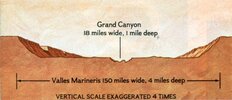Zero Point Native
Registered Senior Member
Well, maybe in some alternate reality, but I doubt we’ll see that in this one.Ah yes, the dream, aliens come down and provide us with interstellar travel so that we can all join Star Fleet Academy.
I keep wondering though, that the time of men will soon be over and as of Jan. 20, the age of the orc will begin.


